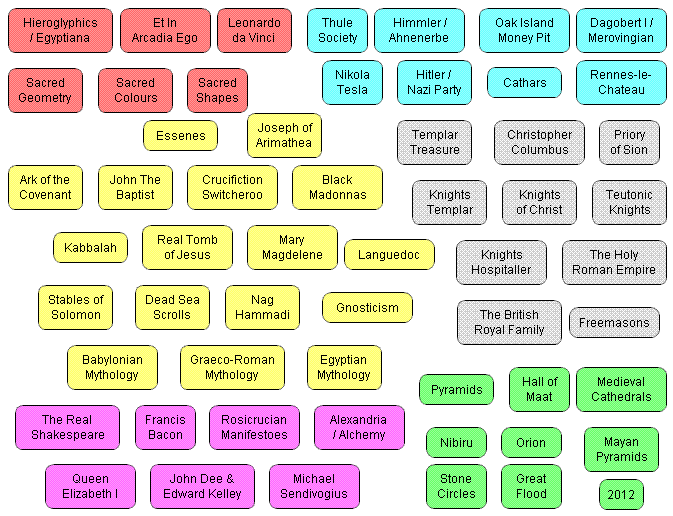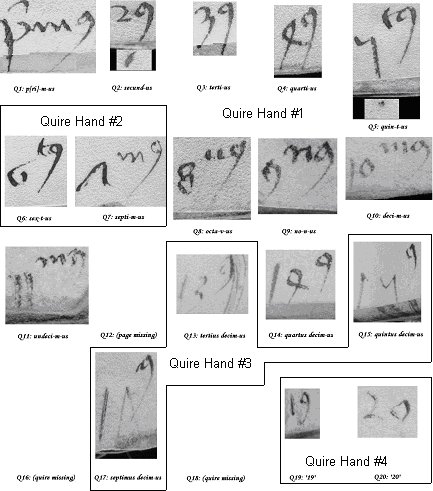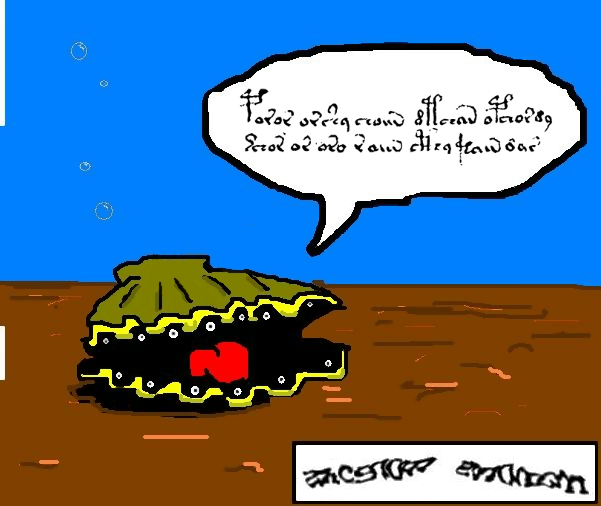Given that the Voynich Manuscript is owned by the Beinecke Rare Book & Manuscript Library, you’d perhaps expect its online description of the VMs to be sober, accurate and helpful – a useful antidote to the speculation-filled Wikipedia VMs page.
Unfortunately, it isn’t.
As a technical writing exercise, I thought I’d dismantle its description to give a more accurate picture of where sensible Voynich research now is…
Written in Central Europe
Hmmm… because the pictures (Italian architecture) and the zodiac marginalia (Occitan) both seem to point to Southern Europe and I can’t really think of any evidence that specifically points to Central Europe, this is hardly an encouraging start to the whole page. Oh well…
at the end of the 15th or during the 16th century,
Given that John Matthews Manly pointed out 75 years ago that the VMs’ quire numbers were written in a 15th century hand, and that we are now quite sure that these were not original, I think “or possibly during the 16th century” might be more balanced (basically, to throw a sop to the vocal hoax and Askham clans).
the origin, language, and date of the Voynich Manuscript—named after the Polish-American antiquarian bookseller, Wilfrid M. Voynich, who acquired it in 1912—
“Polish-Anglo-American” would be more accurate, as would “who claimed to have acquired it in 1912” (Voynich was never completely open about how he bought it).
are still being debated as vigorously as its puzzling drawings and undeciphered text.
Fair enough. 🙂
Described as a magical or scientific text,
…as well as a heretical, alien, channelled, medical, or nonsensical text (unfortunately). Not really a helpful clause, so probably should be dropped.
nearly every page contains botanical, figurative, and scientific drawings of a provincial but lively character,
As the paragraph then goes on to categorize the drawings, reducing this to “…contains drawings of a provincial but lively character” would probably be an improvement.
drawn in ink with vibrant washes in various shades of green, brown, yellow, blue, and red.
This isn’t particularly accurate: while some colours are indeed vibrant (redolent of 16th century inorganic paints), some are actually very faded (redolent of faded organic washes). Describing them all as “washes” also misses out the entire “light painter / heavy painter” debate that has been ongoing for some years.
Based on the subject matter of the drawings,
Rather too simplistic: “based on the apparent subject matter” would be more correct.
the contents of the manuscript falls into six sections:
Again, this doesn’t really do justice to the nuanced view that Voynich researchers now take: which is that the names of the sections are mainly useful as a means for referencing them, whatever the actual contents ultimately turn out to be. Hence, I would replace this with “Voynich researchers group the pages of the manuscript together into six categories”.
1) botanicals containing drawings of 113 unidentified plant species;
Actually, Voynich researchers prefer to call these “herbal” pages, because European botany (in its modern sense) only really began in the 16th century with Leonhart Fuchs and (arguably) Ulisse Aldrovandi, hence the term “botanical” might well be anachronistic. Furthermore, “unidentified” isn’t really true, since there are a handful of plants (most notably the water lily on f2v!) about which nobody seems to argue. So, “1) herbal pages containing drawings of 113 plant species, most of which are unidentified” should be preferred. Also, this omits from the count the second set of herbal pages in Q15 and Q17: and even adding those would fail to notice that some of the herbal drawings are apparently duplicated on different pages (most notably f17v and f96v, but there are others). So, “113” is a bit of a questionable number: I’d prefer “more than 120″.
2) astronomical and astrological drawings including astral charts with radiating circles, suns and moons, Zodiac symbols such as fish (Pisces), a bull (Taurus), and an archer (Sagittarius), nude females emerging from pipes or chimneys, and courtly figures;
Again, Voynich researchers not only prefer to call these “cosmological” and “zodiacal” pages, but also normally split them up into seprate sections. “Astral charts” isn’t really certain, so perhaps “circular diagrams containing stars” would be more representative. The Sagittarius “archer” is actually a crossbowman, which (yet again) has a debate all of its own. A good number of the zodiac nymphs are clothed rather than nude (particularly in Pisces), only a minority are placed in “pipes or chimneys” (which might equally well be maiolica albarelli), and not all of them are female.
3) a biological section containing a myriad of drawings of miniature female nudes, most with swelled abdomens, immersed or wading in fluids and oddly interacting with interconnecting tubes and capsules;
These days, Voynich researchers generally prefer to call Quire 13 the “balneological” section (though I myself sometimes just call it the “water” section), because “biological” seems rather to be prejudging the contents. Again, I prefer to call the naked figures “water nymphs” rather than “nudes”, as this fits in with the general water / bathing theme, and also serves to separate them from the (quite different) zodiac nymphs.
4) an elaborate array of nine cosmological medallions, many drawn across several folded folios and depicting possible geographical forms;
We prefer “rosettes” to medallions; they are all drawn across a single 3×2 fold-out sexfolio, and would be more accurately described as “apparently depicting architectural and geographical forms“. Calling them “cosmological” seems unnecessarily presumptuous.
5) pharmaceutical drawings of over 100 different species of medicinal herbs and roots portrayed with jars or vessels in red, blue, or green, and
The term “pharmacological” has long been preferred for these: and there is an ongoing debate (hi, Rich) about the wide range of jars and vessels depicted.
6) continuous pages of text, possibly recipes, with star-like flowers marking each entry in the margins.
Personally, I’d say they’re more likely to be “flower-like comets” (i.e. some kind of pun on “caput”) than “star-like flowers”, but who knows? And they apparently mark the start of each paragraph (i.e. chapter / caput), rather than an “entry”.
History of the Collection
Like its contents, the history of ownership of the Voynich manuscript is contested and filled with some gaps. The codex belonged to Emperor Rudolph II of Germany (Holy Roman Emperor, 1576-1612), who purchased it for 600 gold ducats and believed that it was the work of Roger Bacon.
This doesn’t really summarize Marci’s letter to Kircher at all. Though Marci had heard these things, he didn’t know if they were true (and he seems keen to distance himself from the Roger Bacon claim).
It is very likely that Emperor Rudolph acquired the manuscript from the English astrologer John Dee (1527-1608). Dee apparently owned the manuscript along with a number of other Roger Bacon manuscripts.
No: although Wilfrid Voynich quickly took the view that this is what must have happened, it is actually very unlikely.
In addition, Dee stated that he had 630 ducats in October 1586, and his son noted that Dee, while in Bohemia, owned “a booke…containing nothing butt Hieroglyphicks, which booke his father bestowed much time upon: but I could not heare that hee could make it out.”
Even though this is a pretty slim pair of reeds to construct a castle upon, that hasn’t stopped plenty of would-be builders since Wilfrid Voynich trying.
Emperor Rudolph seems to have given the manuscript to Jacobus Horcicky de Tepenecz (d. 1622), an exchange based on the inscription visible only with ultraviolet light on folio 1r which reads: “Jacobi de Tepenecz.”
Actually, it reads rather closer to “Jacobj z Tepenec“, and there is also a deleted “Prag” beneath it.
Johannes Marcus Marci of Cronland presented the book to Athanasius Kircher (1601-1680) in 1666.
Once again, Marci tried to present the book to Kircher in 1665 (not 1666), but we have no evidence it actually arrived. Other cipher pages sent with correspondence to Kircher have disappeared, though: all in all, the manuscript’s precise provenance for the next century remains something of a mystery.
In 1912, Wilfred M. Voynich purchased the manuscript from the Jesuit College at Frascati near Rome. In 1969, the codex was given to the Beinecke Library by H. P. Kraus, who had purchased it from the estate of Ethel Voynich, Wilfrid Voynich’s widow.
Actually, Hans Kraus bought it from Anne M. Nill, who had inherited it from Ethel Voynich.
References
Goldstone, Lawrence and Nancy Goldstone. 2005. The Friar and the Cipher: Roger Bacon and the Unsolved Mystery of the Most Unusual Manuscript in the World. New York: Doubleday.
Romaine Newbold, William. 1928. The Cipher of Roger Bacon. Philadelphia, Pennsylvania: University of Pennsylvania Press.
Manly, John Mathews. 1921. “The Most Mysterious Manuscript in the World: Did Roger Bacon Write It and Has the Key Been Found?”, Harper’s Monthly Magazine 143, pp.186–197.
Really? A Voynich bibliography without Mary D’Imperio’s “The Voynich Manuscript – An Elegant Enigma”, without Jean-Claude Gawsewitch’s “Le Code Voynich” near-facsimile edition, and without (dare I say) “The Curse of the Voynich”? Not very impressive.
In summary, then, it’s an article which (despite mentioning a 2005 book) seems to reflect the inaccuracies and fallacies of Voynich research circa 1970. I’d happily rewrite it for them – but is the Beinecke actually interested? I wonder…





